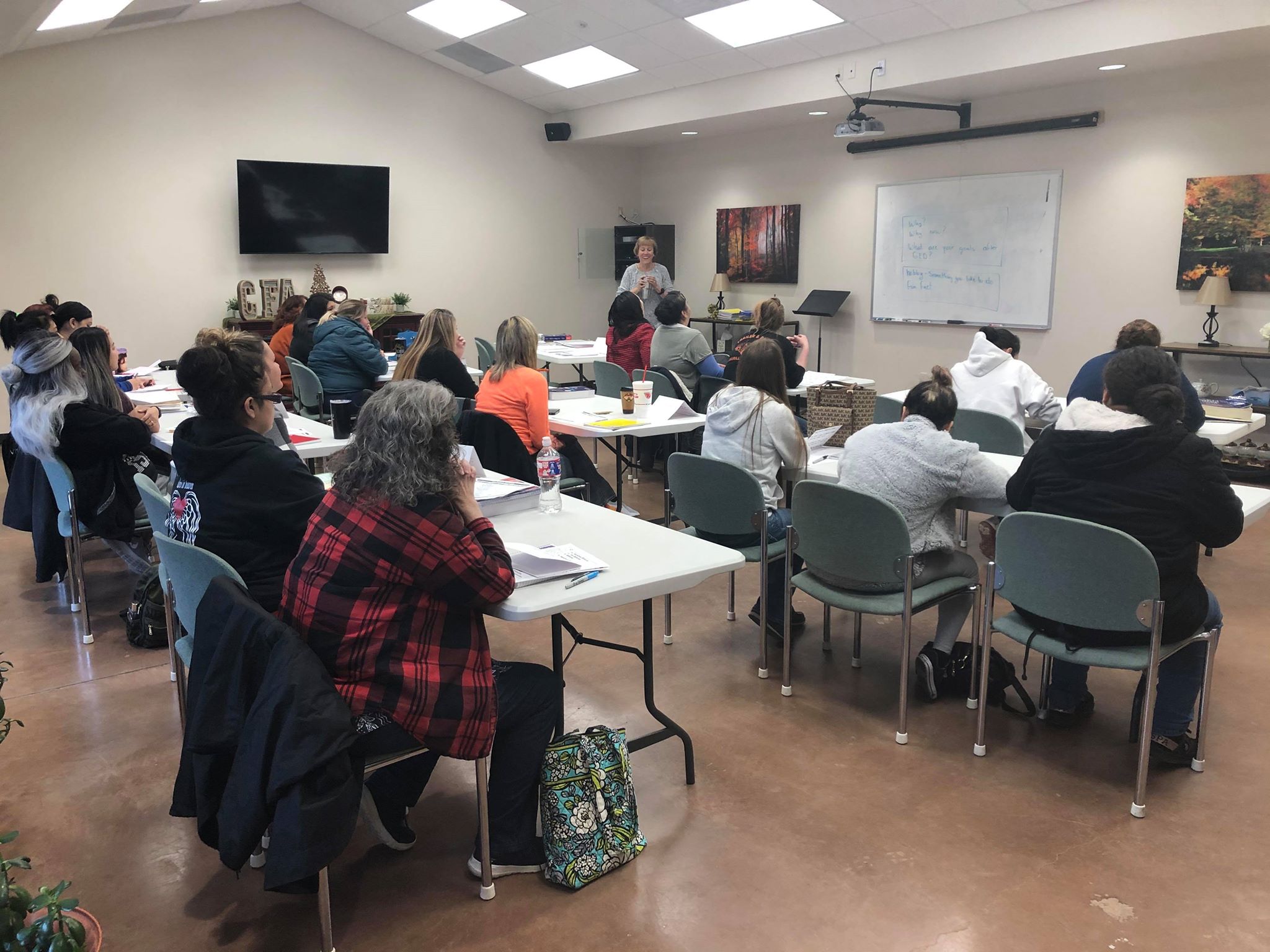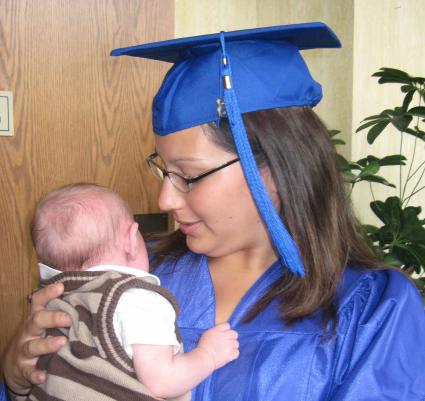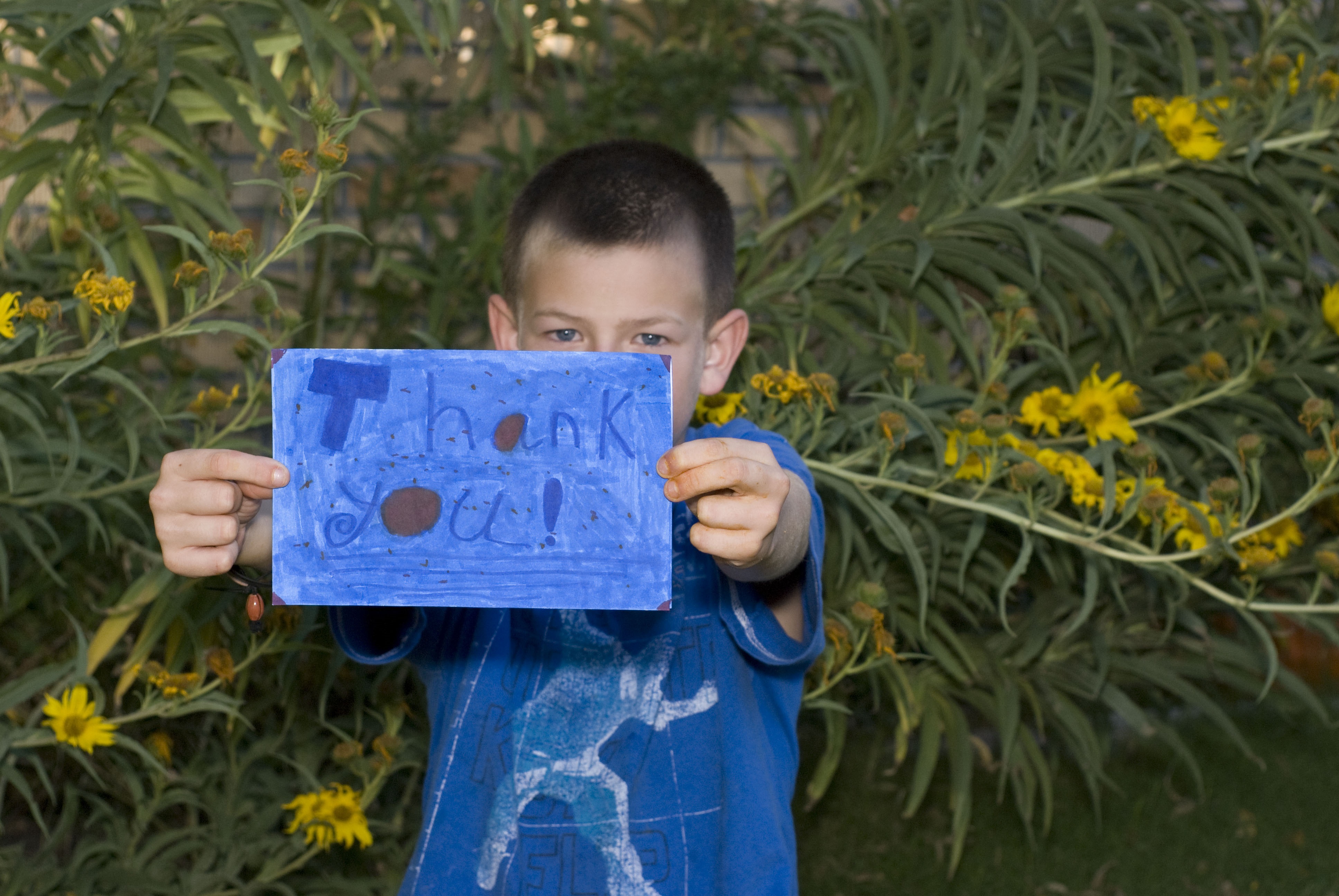Pantex Blog
Patsy’s Place shares hope thanks to Pantex grant

Sharing Hope Ministry received $10,000 in 2020 from the Pantex Community Investment Fund to support its mission to assist at risk and incarcerated women in changing their story by sharing hope through Christ’s love.
“We do this by sending the Life Recovery Bible and Bible studies to women in prisons and rehabs across the country,” Stevi Larson, special events coordinator at Sharing Hope Ministry said.
Locally, Sharing Hope also has Patsy’s Place Transitional Home which is a 12 month Christ-based home that mentors women as they are released from prison or jail in hopes of setting them on a more positive journey. The grant funds from the Pantex Fund went specifically to Patsy’s Place Transitional Home.
“The funding has been instrumental in our program’s ability to provide materials for classes, medical, mental and dental assistance, events, GED books and supplies, food, hygiene items and assistance with housing, transportation and medical expenses for post-offending women in Amarillo,” Larson said.
Sharing Hope Ministry began locally in 1999 and operates locally to this day.
“A group of women at a local church had been praying for an outreach project when they received a request from a woman in one of our local jails asking for Life Recovery Bible,” Larson said. “They granted her request and as she shared where she got the Bible, it became clear that this was the outreach that God had intended for them.
In 1999, Sharing Hope gave out 2 Bibles, but by the end of 2000 they had given out over 2,000 Life Recovery Bibles.
“The church we were originally associated with saw the importance in the work that we were doing and told us to become a separate non-profit organization,” Larson said. “We gained non-profit status in 2001, and since our beginning we have sent out over 165,000 Life Recovery Bibles.”
Grants through the Community Investment Fund are awarded by an employee-led committee, and Larson said she’d like to share a big thank you to those who were part of the committee.
“I know that the people on this committee do it voluntarily and that it can be a hard task to listen to all of the non-profits and make a decision on who gets funding,” she said. “I know that they take being a part of the committee very seriously and I just am very grateful for each and every one of them. And thank you Pantex for caring enough about our community to make this amazing opportunity available!”
Consolidated Nuclear Security established the Pantex Community Investment Fund and has been helping local organizations since its inception in 2016. The Pantex Fund is a partnership with the Amarillo Area Foundation, which assists in the distribution of funds. In 2020, 16 nonprofits in the Texas Panhandle received grants equaling over $121,000 from the fund during a virtual ceremony.
From the beginning, Pantex created an employee advisory committee to determine distribution of the grants that target charities and non‑profit organizations that offer assistance with basic needs, children, youth, families, community development, education, financial literacy, as well as health and wellness.

Moving mountains at Martha’s Home

Martha’s Home in Amarillo helps single mothers and their children rebuild their lives.
Martha’s Home is much more than a homeless shelter. Since 1987, it has been a place for Amarillo women, including single mothers with their children, to re-build their lives and break the cycle of poverty. The organization offers life skills training, case management, counseling, life recovery classes, mentoring, and thanks to a $10,000 grant from CNS, they have the ability to continue moving mountains.
“These things are not just a blip in their budget, it’s a mountain,” said Martha’s Home Executive Director Connie Garcia. “When you have a choice between paying car insurance and feeding your children, having someone remove that barrier can make a very tangible impact. They can drive to work without fear of getting a ticket.”
The organization has earmarked the grant funds to take care of special needs for residents, which could include car repairs, insurance, or registration.
Imagine fleeing a domestic violence situation and needing a new driver’s license or birth certificates to enroll your children in school. In Texas, birth certificates are approximately $22 each, which can add up for multiple children. Martha’s Home helps remove that barrier. It also provides special clothing or shoes needed for new jobs as the women get back on their feet.
“Thank you, thank you, thank you,” said Garcia. “This is an incredible blessing, and we are more grateful than words can say.”
The organization, named after Martha in the Bible, serves approximately 100 women each year in one of their five homes. The women receive more personal attention than at a temporary shelter and stay approximately three to four months before moving out with their housing deposit paid from the special needs fund.
Martha’s Home accepts donations of household items or monetary gifts. They also raise funds by hosting annual fundraisers like the popular Second Chance Prom and the Slack-A-Thon 0.5K Run/Walk.
The $10,000 was awarded by the Pantex Community Investment Advisory Committee, comprised of CNS employees. Through the Community Investment Fund administered by Amarillo Area Foundation, CNS has invested more than $850,000 in local nonprofits in the Texas Panhandle since 2016.
“We chose Martha’s Home to receive a Pantex Community Investment grant because of the lasting positive impact the organization has on helping homeless women in the Texas Panhandle,” said investment committee member Channing Sparks. “It was important for us to support a fund that directly helps single women and women with children with any issues that may arise while pursuing employment, housing, or education on their journey to being successful members of our community.”
Pantex launches new West Texas MesoNet Weather Network
Pantex Staff Meteorologist Steve Kersh checks out a MesoNet weather gathering site that will soon be utilized across the region to supply Pantexans and Emergency Management staff with updated, real-time weather information.
What’s the temperature outside? How much rain has fallen? Those questions may appear to have easy answers, but at Pantex where the closest official meteorological station is located at the Rick Husband International Airport, accurate answers can vary greatly over the 16-mile difference.
Our weather can and does change quickly; it may be raining here at Pantex, while less than a mile away, the sun is shining. We can gather real-time weather information from our few weather stations, but access to the data may be limited or not available to everyone due to security measures. That’s all about to change.
Pantex is scheduled to have a West Texas MesoNet site installed just east of FM 2373 within the next few months. The site will be an official meteorological station, updating every five minutes. It will provide the usual readings such as temperature, humidity, rainfall, wind direction and speed, and barometric pressure, but readings will also include soil temperatures and moisture, solar radiation information, red flag fire danger index, and wind data from three different heights: 6.5, 20, and 30 feet. All the instrumentation will be classified as official by the World Meteorological Organization.
“I think it is important to have an official meteorological station for many reasons,” said Pantex’s newly hired staff meteorologist, Steve Kersh. “Primarily, Pantexans will be able to view current conditions at work before they leave their homes. Secondly, the data from the Pantex West Texas MesoNet will be readily available online. No matter where you are, you will be able to see Pantex weather conditions anywhere, anytime.”
The data will also be a benefit to Emergency Management and the Pantex Fire Department, which will now have a way to measure the “Red Flag Index” of vegetation here on site.
“In addition to employees being able to see the weather condition, the Pantex Fire Department will now have five-minute updates throughout the day on the ‘Red Flag Threat Index,’ which measures the fire danger instantly, thanks to the MesoNet’s constant monitoring of soil moisture and temperature,” Kersh added.
With the ongoing Texas Panhandle drought and the upcoming fire season, the information is invaluable. Knowing how much it rained and the current temperature compared to what is predicted down the road will also be useful to groups monitoring storm water runoff, environmental impacts, and meteorology.
Additionally, the Amarillo National Weather Service office is excited about the future Pantex West Texas MesoNet. Due to our proximity with official equipment, the Pantex site will be their backup site should their equipment fail.
The West Texas MesoNet is a project of the National Wind Institute, located on the campus of Texas Tech University. The National Wind Institute began after the deadly F-5 tornado struck Lubbock in 1970 and has been vital in providing weather data, including information used in constructing lifesaving, in-home tornado shelters.
Whether at home, traveling to work, or halfway around the world, employees will be able to access the Pantex MesoNet data via the West Texas MesoNet app, which can be downloaded for free in the App Store for Apple devices and in Google Play for Android devices, or simply by going to the West Texas MesoNet site.
Helping Panhandle children in need through Pantex’s Community Grants
Consolidated Nuclear Security established its Community Investment Fund in 2016 at Pantex. The Pantex Fund is a partnership with the Amarillo Area Foundation, which assists in the distribution of funds, and from the beginning, Pantex created an employee advisory committee to determine distribution of the grants.
One of those recipients is the Amarillo Children’s Home. They have been operating for almost 100 years, focusing on restoring the lives of children in the Texas Panhandle. The majority of their funding, about 70 percent, comes from community support, and the remainder is made up from state contracts.
According to ACH Director of Development, Erica Currie, “Our mission is restore the identity of children, so they can realize their great value and be a blessing to others. We believe this is the birthplace for creating generational change in the Texas Panhandle. Because of community partners like CNS Pantex, ACH has been restoring those lives. You make our work possible, and we are so grateful.”
This year, the Community Investment Fund gave $10,000 to ACH and the entire amount was earmarked to its “Feed the Tummy, Fill the Soul” program. “Around 30,000 Texas children are currently in foster care, and securing resources for each child is challenging,” said Currie.
“Most foster children have been exposed to conditions that undermine their chances for healthy development, and their needs are great, including the need for nourishment. While this is not surprising, the way ACH uses a simple meal to help transform lives is unique.”
ACH's house parents use mealtime to bring everyone together to teach valuable life skills, like nutrition, team work, planning, cooking, table setting, and etiquette. The house parents and children work together to plan, cook, and serve nutritious meals, and everyone has a role to play. Around the dinner table, families talk about their day, and each child is engaged on a personal level. As a child begins to feel loved and accepted, doors open for them to excel in other areas like school.
“While feeding children is simple, ACH uses it as an opportunity to also feed a child’s soul, to love on them, and to remind them that they have not been forgotten. This is paramount in breaking the cycle of abuse that is prevalent in today’s foster care system,” said Currie. To Pantex employees, she said, “Thank you for partnering with us as we care for our children, allow them to see their great value, and teach them to be a blessing to others.”
The Pantex committee prioritizes grant applications from organizations located and operating in the 12 contiguous counties surrounding Pantex, with the emphasis on: Basic Needs, Child and Family Development, Education, Community Development, Financial Literacy, and Health and Wellness. In four years, including the latest round of grants, CNS has given more than $860,000 to area non-profit organizations through the Amarillo Area Foundation.

I am mission success: Ryan Warren
Take 5 minutes and learn more about CNS’s Ryan Warren, Metal Trades Council Culture Advocate. All views and opinions are the employee’s own and do not necessarily reflect those of CNS,/abbr>.
Ryan Warren worked as an electrician at Pantex for six and a half years until recently being named the new Metal Trades Council (MTC) Culture Advocate. During his time at Pantex, he has also served as MTC Shop Steward and Recording Secretary and on the International Brotherhood of Electrical Workers (IBEW) Local Union 602.
Some of his duties now include reporting significant events and trends identified within the plant to both MTC officers and senior management.
“I want to foster open, honest, and helpful communication in all directions between management, union, and otherwise across organizational boundaries, and more,” Warren said.
Another part of his job is to develop ideas to implement improvements; train new employees on Pantex Safety Culture; and manage, promote, and advocate for positive change in the workplace.
“Some of my goals are to recognize problems and contribute to developing solutions and to promote a respectful, safety conscious, and ever-improving work environment,” he said.
Warren said that while he loved his work as an electrician, he’s excited for his first real desk job in 15 years and to be able to help in this new capacity.
“I’ve always promoted brotherhood through solidarity and teamwork,” he said. “I left a good job for a better one, and I want to help keep it that way, for myself and others.”
Why are you mission success?
I am mission success because I work to build trust by honoring my commitments, not making promises I can’t keep, and staying consistent. As a tradesman, the only thing I have to sell is my integrity. I always strive to do the right thing, regardless of who’s watching. Although I have faltered many times along the way, I do my best to keep these values regardless of the job I’m assigned. Respect is built on guiding, learning, teaching, and leading by example.
Are you doing what you envisioned as a young adult?
Apparently, being a rock star isn’t as easy as Bachman Turner Overdrive would have one believe. Fishing is way easier. I was working as a telemarketer selling ketchup popsicles when a buddy of mine told me he got a job as an electrician. He said he got to bend pipe, spit and cuss, pull wire, and dig ditches all day. That sounded better than what I was doing, so I applied at the IBEW Local Union 602, got in the apprenticeship program, joined the union, and four years later became a journeyman. It was the best career move I have ever made for myself and my family. I jumped on the Pantex train a few years after that.
As an employee, what do you want to be remembered for?
I hope to be remembered as level-headed, disciplined and thoughtful; unafraid to speak my mind, yet open-minded. I want everyone to know that I care about the well-being of all of my coworkers, union and all.
What’s your top bucket list item and why?
I hope to one day see the Parthenon in Greece and the Colosseum in Rome. I want to visit Yokosuka, Japan, where my mom was born, and San Diego, where she was raised. I also want to take my boys to see the Christian heavy-metal band Impending Doom. All equally important to me.
What’s your favorite outside-of-work activity and why?
I’ve been married to my wife for 18 years and have two boys. My favorite thing in the world is doing anything with my lovely family: playing kickball, music, movies, cooking, board games, church, reading comics, wrestling on the trampoline, eating Asian cuisine, watching grass grow, getting beat at Plants vs Zombies; I love it all. Although lock-down and quarantine have been tough for everyone, I’ve been remarkably blessed by the most amazing family, and I cherish all the time we’ve gotten to spend together over the last year. They are my entire world.
